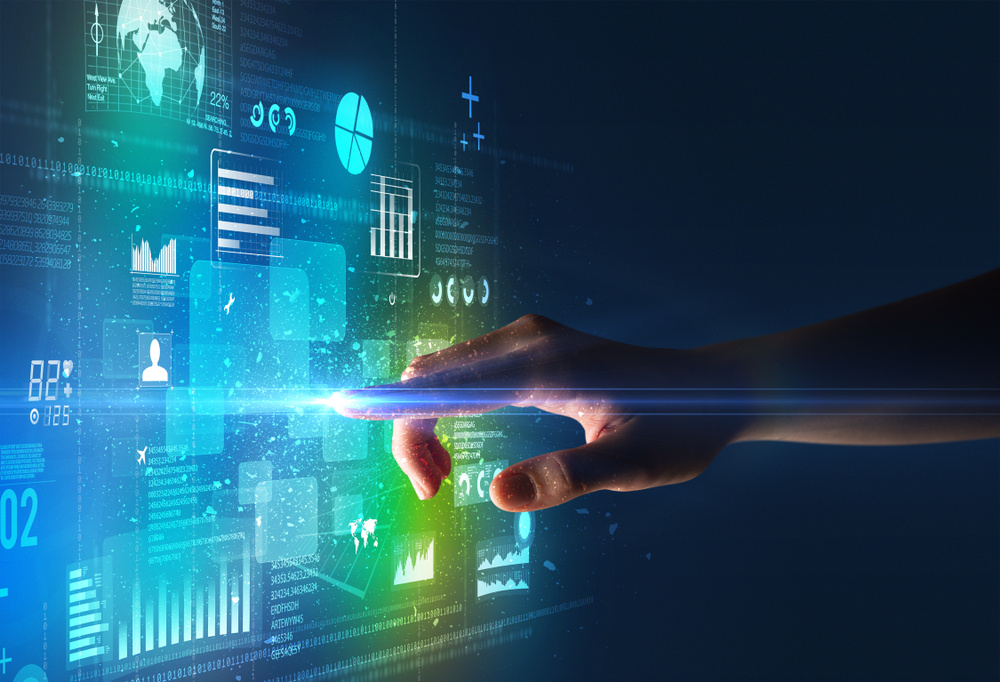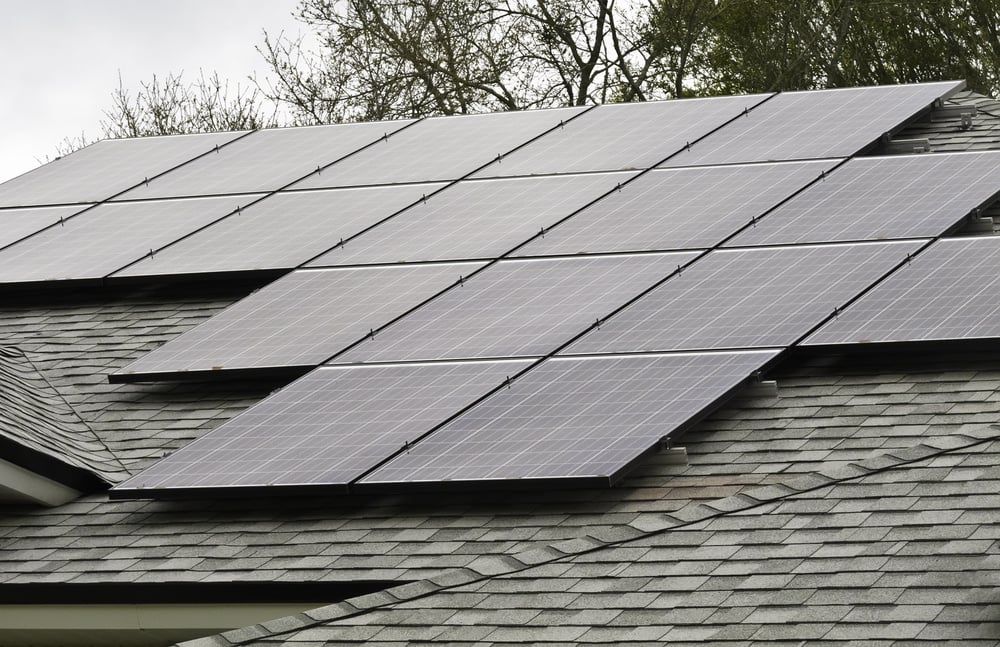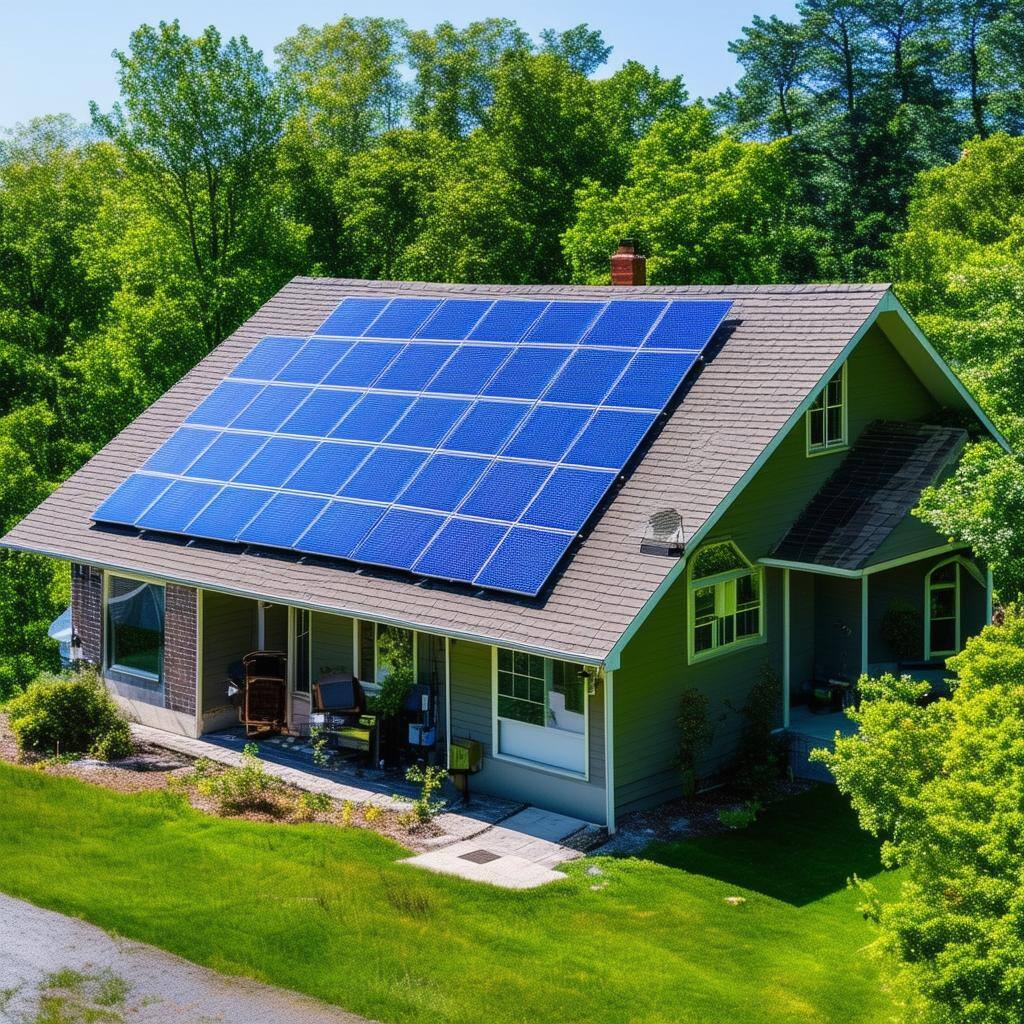Solar Batteries: Are They Worth It? A Complete Guide to Solar Battery Storage
When you think about going solar, you probably picture panels on your roof soaking up sunlight and turning it into electricity to power your home....
6 min read
Peter Swenson : Nov 11, 2024 8:30:00 AM

Imagine a world where the power you rely on every day – from keeping your home lit and comfortable to charging your devices and even fueling electric vehicles – becomes unreliable and increasingly expensive. It might sound far-fetched, but with the rise of artificial intelligence (AI), microchip manufacturing, and increasing energy demands, America’s power grid is heading for serious challenges. The U.S. power grid, originally designed decades ago for a fraction of today's population, is now struggling to keep up with demand. And this strain on the grid has consequences that could impact not only the environment but also the budgets of everyday consumers.
In this post, we’ll explore the underlying causes of this strain, the role of AI and microchip manufacturing in pushing the grid toward its breaking point, and what all of this could mean for you. Let’s dive into the core issues, the specific factors driving this crisis, and how these changes might impact your pocket.
America’s power grid was never built to withstand today’s demands. Built primarily in the 1930s and 1940s, it was designed to support around 200 million people, at a time when household energy demands were a fraction of what they are now. Fast forward to today, and we have over 330 million Americans relying on the same, aging infrastructure.
Much of the grid infrastructure across the U.S. is now well over 70 years old, with some components close to 100 years old. Think about that – some of the power lines, transformers, and substations that bring electricity to your home were installed when TVs were black-and-white, and computers hadn’t even been invented. Back then, people weren’t using high-power devices like air conditioners, electric heating, and large appliances that are common in today’s households. The grid wasn’t designed for the load it now carries.
Growing Vulnerability: This outdated infrastructure is vulnerable to frequent outages, especially with the increase in extreme weather events like hurricanes, floods, and wildfires. Nearly 70% of power outages in the U.S. today are due to weather-related events.
Repair and Replacement Costs: Upgrading the grid to handle modern demand and withstand extreme weather will take a lot of work – and money. Experts estimate it will cost around $2 trillion by 2035 to make the necessary improvements. This will include replacing old power lines, improving substation equipment, and increasing the grid’s resilience to better handle extreme weather.
Without significant upgrades, the grid risks not just inconvenience but serious failure, leading to potential blackouts that could affect millions. The key takeaway? These upgrades are essential but costly, and those costs are likely to trickle down to consumers in various ways.
As if the aging infrastructure wasn’t enough, population growth is adding more demand than ever to the grid. Since 2000, energy consumption in the U.S. has increased by almost 30%. The average American home now consumes around 11,000 kilowatt-hours (kWh) per year. That’s a lot of power, especially considering the vast array of modern devices, appliances, and the growing popularity of electric vehicles.
A big part of this increased energy demand is due to how our lives and homes have evolved. Consider these trends:
Modern Devices and Appliances: Today’s households are filled with high-power devices, from energy-hungry air conditioning units to electric stoves, dryers, gaming systems, and more. Each of these adds to the overall load on the grid.
Electric Heating and Cooling: Modern heating and cooling systems, while more efficient than before, are being used more frequently due to extreme weather. Air conditioning in the summer and electric heating in the winter have become essential, putting even more pressure on the grid.
Electric Vehicles (EVs): With the shift toward electric vehicles, there’s an added demand on the grid for charging. EVs are seen as a greener option, but they need power – and lots of it. The more EVs on the road, the more electricity the grid must supply.
The U.S. population is expected to increase by 40 million people by 2050. Each additional person contributes to energy demand, either directly through their household consumption or indirectly by supporting the infrastructure and technology that supports daily life. As this demand grows, so does the need for electricity, placing even more stress on an already fragile grid.
Artificial intelligence and microchip manufacturing are among the fastest-growing sectors in technology, but they come with a hidden cost – a massive demand for energy. This isn’t just a minor addition to the grid’s load; it’s a seismic shift that could change the way we consume power.
AI systems, particularly those used in data centers for machine learning, require a lot of computational power. This means running high-powered servers 24/7, and keeping them cool, which uses even more energy. Data centers currently consume about 2% of the U.S. electricity supply, but with AI use on the rise, this number could triple in the coming years.
Energy Costs of AI: AI data centers are projected to use up to 40% of U.S. electricity by 2030. This would mean trillions of watts of electricity, or the equivalent of millions of homes, just to support AI functions like chatbots, image recognition, automated manufacturing, and logistics.
Water and Cooling Needs: High-power data centers require significant cooling, which often involves enormous quantities of water. This doesn’t just strain the grid but also local water supplies, adding another layer of complexity to energy management.
Microchip manufacturing is another major player in the rise of energy demand. With planned facilities across the U.S., each facility is expected to use as much energy as a city of 80,000 homes. As AI technology and consumer electronics grow, demand for microchips surges, fueling the need for more manufacturing plants. This further burdens the grid, especially when multiple facilities draw large amounts of energy in close proximity to each other.
The impact of these sectors on the grid is two-fold: they increase total energy consumption and concentrate that demand in specific areas, making local grids even more vulnerable to overload.
As AI, microchip manufacturing, and population growth drive up energy demand, the consequences for consumers are likely to be significant. Here’s what we can expect in the years ahead:
With demand outpacing supply, the cost of electricity is bound to rise. Grid upgrades, more frequent outages, and the pressure from industrial power users like data centers and microchip plants mean higher costs for utility companies, which will likely be passed down to consumers. Here’s how:
Upgrade Costs: The $2 trillion needed to bring the grid up to modern standards has to come from somewhere, and much of it will be funded by increases in utility rates.
Increased Demand: As the grid struggles to keep up with high demand, consumers can expect to see rate hikes to cover the additional energy costs.
For everyday consumers, this means higher monthly bills – an especially challenging outcome for those already struggling with energy costs.
One of the most immediate impacts of an overstrained grid is the potential for frequent blackouts, especially during peak demand times. Cities and densely populated areas, in particular, could experience unplanned outages more often as demand exceeds the grid’s capacity.
Peak Usage: Hot summer days with high air conditioning use, combined with AI data centers and microchip plants drawing power, could lead to brownouts or blackouts.
Grid Stability: An overworked grid can become unstable, with power fluctuations and outages becoming more common as energy demands push the system past its limits.
Blackouts aren’t just inconvenient; they can have serious consequences, from economic losses to risks for people relying on powered medical devices or cooling systems.
One unfortunate side effect of this rising demand for power is a potential increase in fossil fuel use. To meet rising demand, some utility companies may delay the retirement of coal and gas plants, or even reopen them, to provide backup power for high-demand periods. This could lead to:
Higher Emissions: Increased reliance on fossil fuels means more carbon emissions, which contribute to climate change and air pollution.
Delay in Green Energy Goals: The push to reduce carbon footprints may take a back seat as utilities focus on meeting demand, possibly slowing the transition to renewable energy sources.
In other words, while AI and technology might drive innovation, their energy demands could actually slow progress in the fight against climate change if the grid isn’t prepared to handle the increased load sustainably.
The costs associated with energy demands and grid instability won’t stop at your utility bill. Companies dependent on AI, microchip manufacturing, or heavy power consumption are likely to face rising operating costs, which they may pass on to consumers.
These higher prices may not happen overnight, but as energy costs rise, the impact will eventually reach consumers across various sectors.
The U.S. power grid is facing an enormous challenge, one driven by aging infrastructure, population growth, and skyrocketing energy demands from AI and microchip production. For consumers, this means higher energy bills, a greater risk of blackouts, environmental consequences, and potentially higher prices on products and services that rely on power-intensive industries.
What can you do?
Invest in Home Energy Efficiency: Reducing your household’s energy consumption can help lower your bills and lessen your dependence on the grid. Simple upgrades like energy-efficient appliances, smart thermostats, and LED lighting can make a difference.
Consider Solar Power and Storage: Generating your own power with solar panels and storing excess energy in batteries can give you more control and help you avoid peak energy costs. It’s an investment, but one that could pay off as grid prices rise.
Stay Informed: Keep an eye on energy policy, infrastructure updates, and utility changes in your area. Being aware of these factors can help you make informed decisions about your energy usage and long-term planning.
The road ahead is challenging, but with smart choices, we can all brace for impact and find ways to adapt to the changing energy landscape. The grid may be strained, but with the right preparation, you can protect yourself and your budget in the face of rising energy demand.

When you think about going solar, you probably picture panels on your roof soaking up sunlight and turning it into electricity to power your home....

If you’ve been looking into solar energy, you’ve probably noticed there’s no one-size-fits-all solution. Instead, there are a few key options: ...

Solar 101: The Complete Beginner’s Guide to Solar Energy As more homeowners seek sustainable and cost-effective energy solutions, solar energy has...